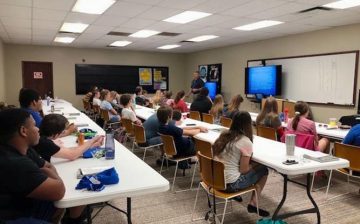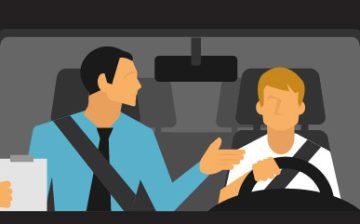Driving School Cost: Average Prices to Expect for a 6-Hour Driving Course in Illinois
Are you considering enrolling in a driving school to get behind the wheel with confidence? Learning how to drive is an exciting journey, but one important factor to consider is the cost. Driving school costs can vary widely depending on various factors, including location, the type of driving course, and the reputation of the school. In this article, we’ll dive into the average prices you can expect for a 6-hour driving course in Illinois. Whether you’re a beginner or looking to enhance your driving skills, understanding the costs involved will help you make an informed decision.
Table of Contents
- Introduction
- Factors Affecting Driving School Costs
- Location
- Type of Course
- School Reputation
- Average Cost of a 6-Hour Driving Course in Illinois
- Additional Fees to Consider
- Finding Affordable Driving Schools Cost
- The Value of Professional Driving Instruction
- Comparing Prices vs. Quality
- Financial Benefits of Taking a Driving Course
- Conclusion
- FAQs
Introduction
Learning to drive is a significant milestone, and enrolling in a reputable driving school can make the process smoother and safer. However, before embarking on this journey, it’s important to understand the costs involved.
Factors Affecting Driving School Costs
Location
The cost of driving school can vary from state to state and even city to city within Illinois. Urban areas often have higher costs due to increased demand and higher living expenses. Suburban or rural areas may offer more affordable options.
Type of Course
Driving schools offer various types of courses to cater to different needs. A is a common choice for beginners or those looking for a refresher. More intensive courses, such as comprehensive driving programs, might come with higher price tags.
School Reputation
Reputable driving schools with experienced instructors and a track record of producing safe drivers might charge more for their services. Investing in quality instruction can lead to safer driving skills and better road confidence.
Average Cost of a 6-Hour Driving Course in Illinois
On average, a 6-hour driving course in Illinois can cost between $150 and $300. This cost usually includes both classroom instruction and practical driving experience with a certified instructor. Remember, these prices are approximate and can vary based on the factors mentioned earlier.
Additional Fees to Consider
In addition to the course fee, some driving schools may have additional charges for materials, processing, or certification. It’s essential to inquire about all potential fees upfront to avoid any surprises later.
Finding Affordable Driving Schools
While quality instruction is important, affordability is also a consideration for many learners. Research and compare driving schools in your area to find a balance between cost and quality. Reading reviews and testimonials from previous students can provide insights into the school’s reputation.
The Value of Professional Driving Instruction
Enrolling in a driving school provides more than just the basics of operating a vehicle. Professional instructors teach essential defensive driving techniques, road safety rules, and proper handling of various driving situations. Investing in professional instruction can lead to a lifetime of safe driving habits.
Comparing Prices vs. Quality
When evaluating driving school costs, it’s crucial to consider the quality of instruction alongside the price. A lower-priced course might not offer the same level of experienced instructors and comprehensive curriculum as a slightly more expensive option.
Financial Benefits of Taking a Driving Course
While the upfront cost of a driving course might seem significant, the long-term financial benefits can outweigh the expense. Learning proper driving techniques can lead to fewer accidents, lower insurance premiums, and potential savings in the event of a collision.
Conclusion
Enrolling in a driving school for a 6-hour course in Illinois is an investment in your safety and the safety of others on the road. While the cost may vary based on location, course type, and school reputation, the value of quality instruction and safer driving skills cannot be underestimated.
FAQs
Q1: Can I find driving schools that offer discounts or special offers?
A1: Yes, many driving schools may offer promotional deals or discounts, especially for new learners.
Q2: Are there any age restrictions for enrolling in a driving course?
A2: Age requirements can vary by state and driving school. Check with the school you’re interested in for specific details.
Q3: Do driving schools provide vehicles for the practical lessons?
A3: Yes, driving schools typically provide dual-controlled vehicles for practical lessons to ensure safety and effective learning.
Q4: Is behind-the-wheel practice included in the 6-hour course?
A4: Yes, a 6-hour driving course usually includes practical driving experience with a certified instructor.
Q5: How can I verify the reputation of a driving school?
A5: Reading online reviews, checking for certifications, and asking









